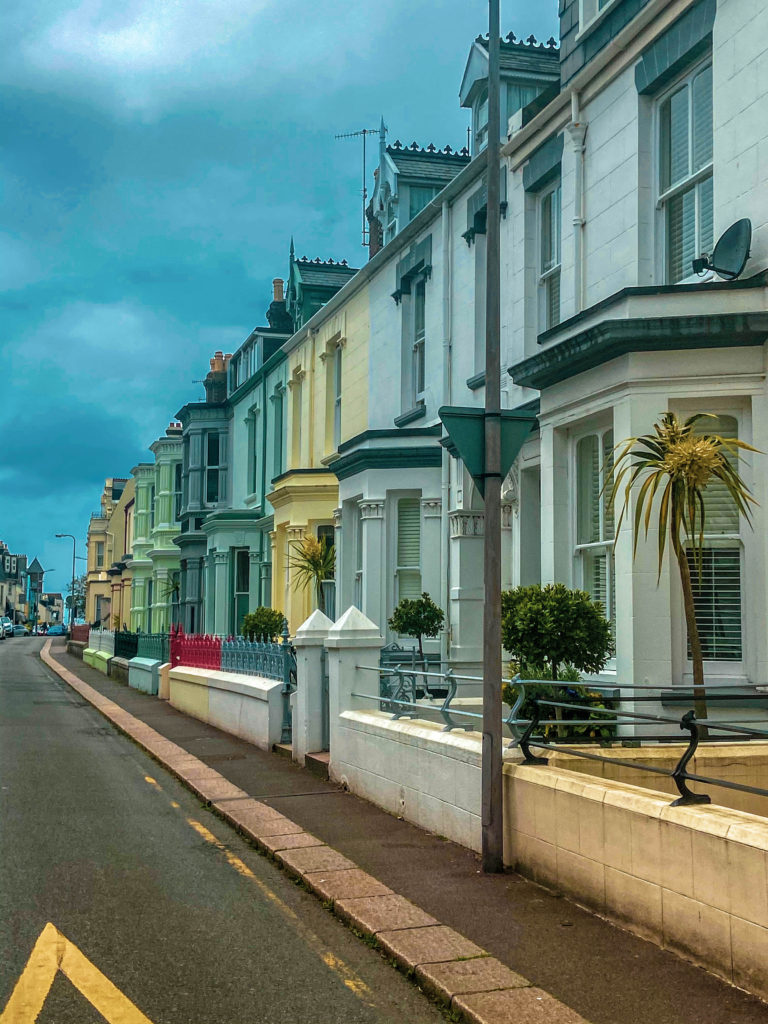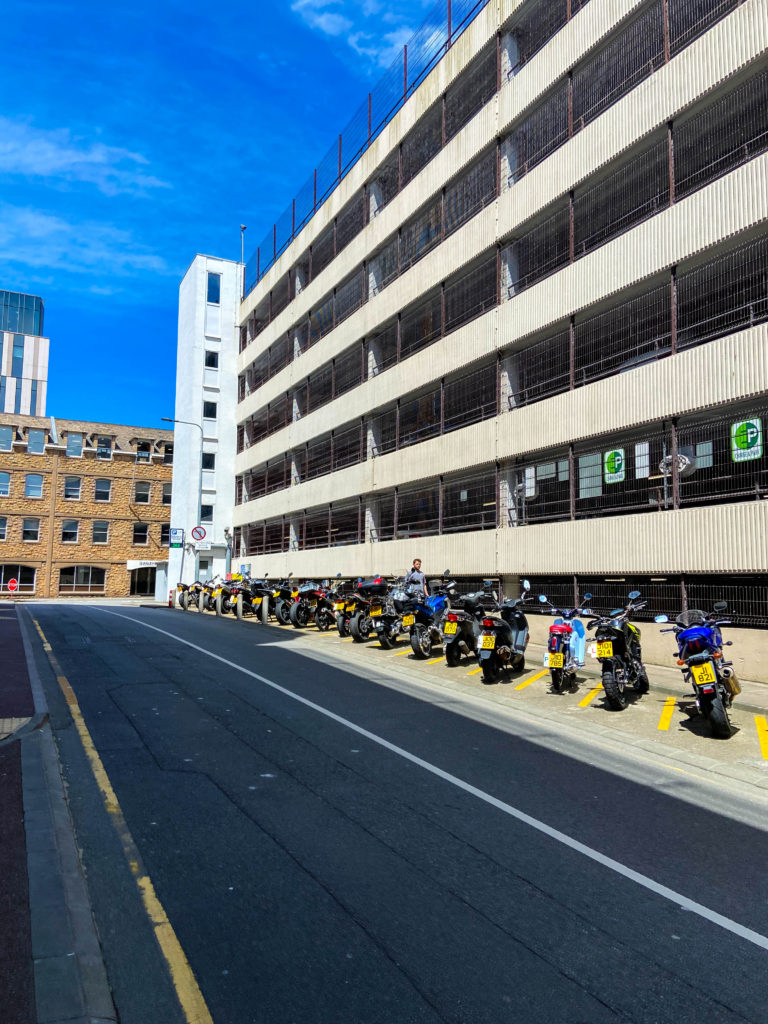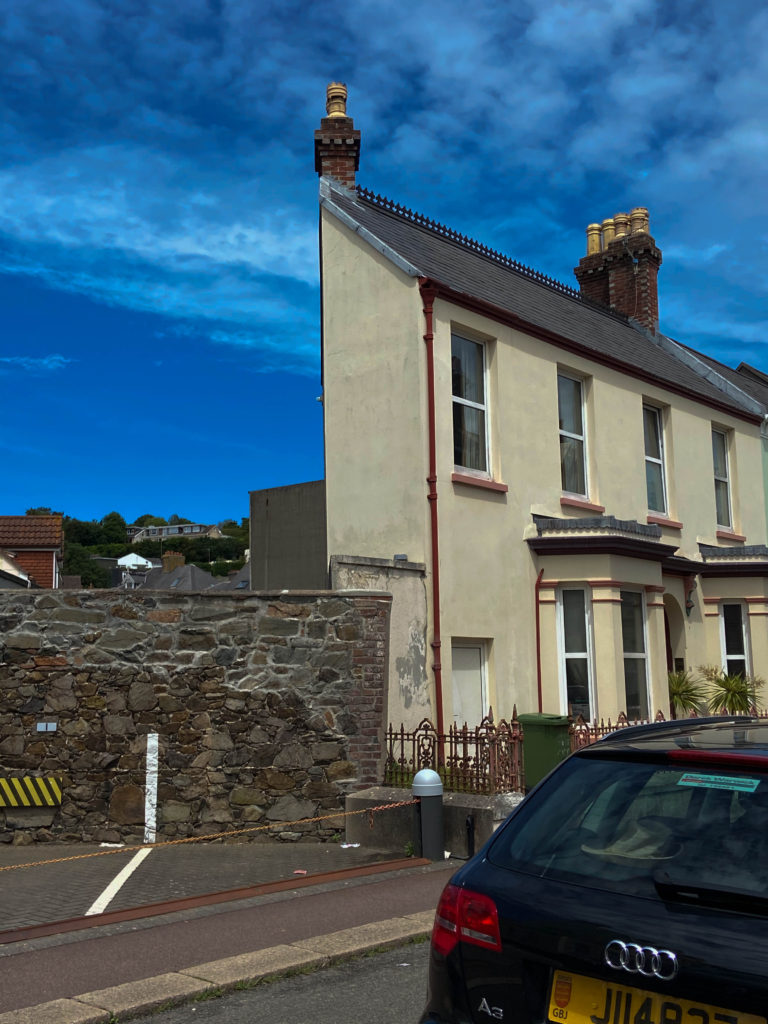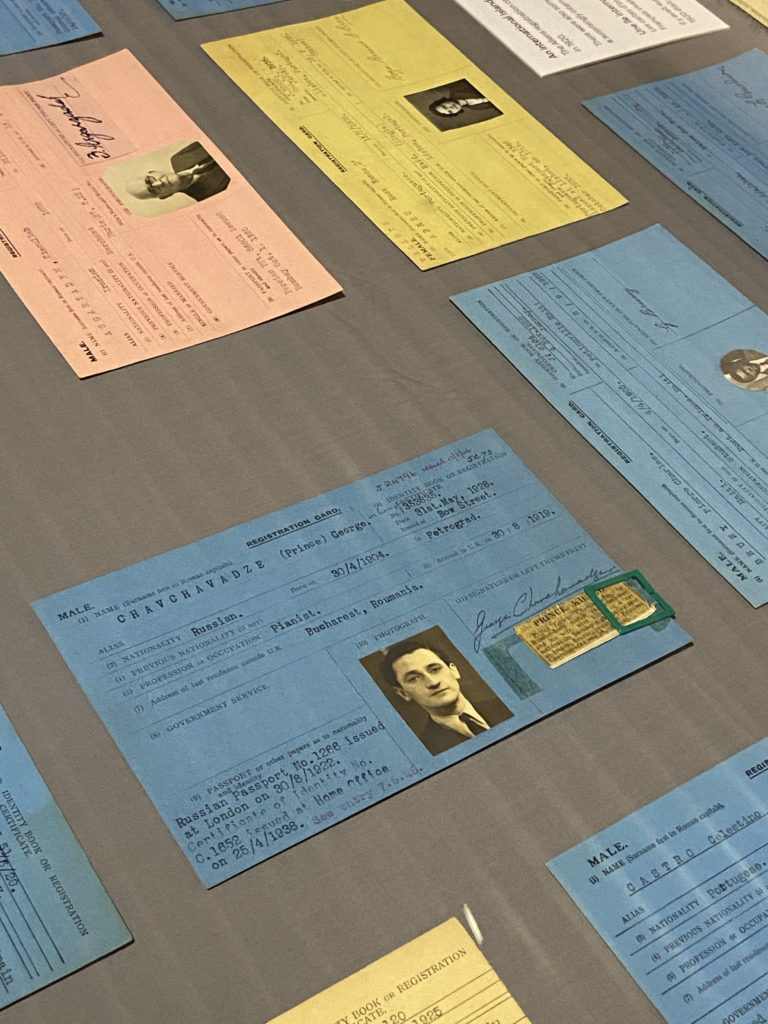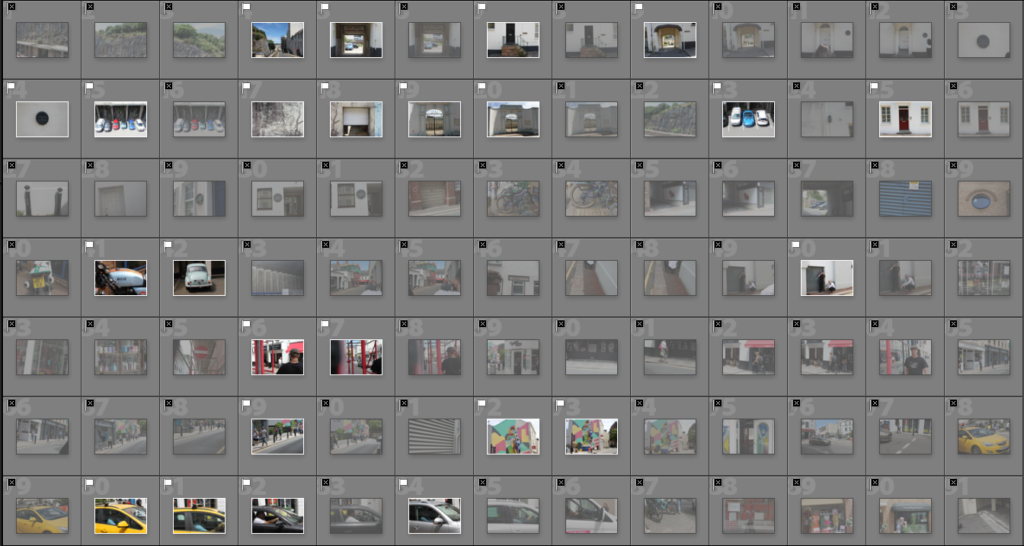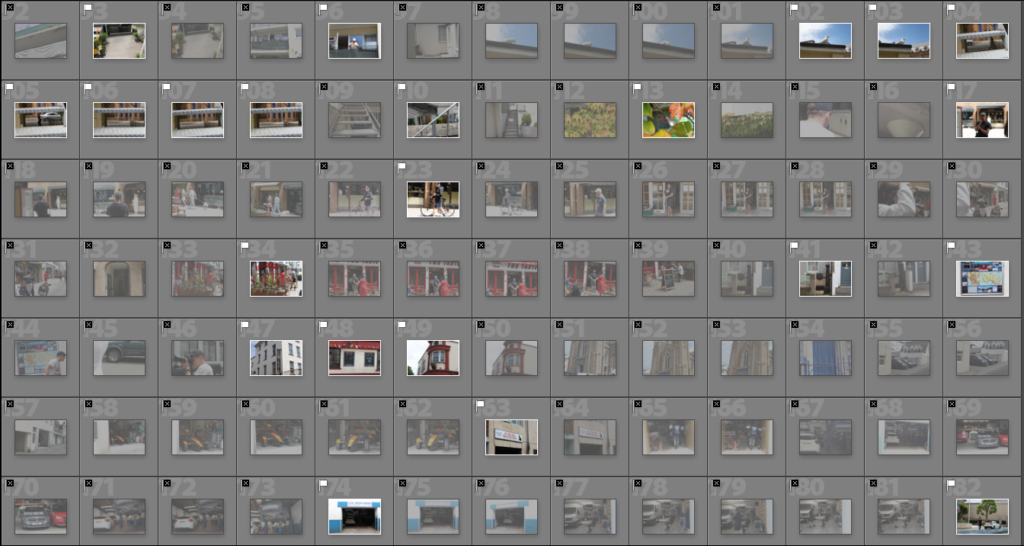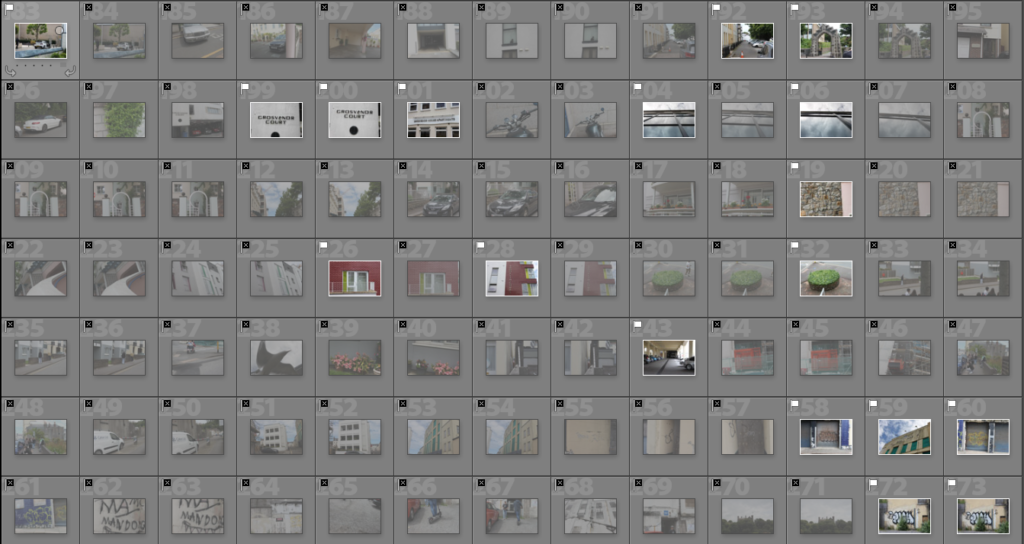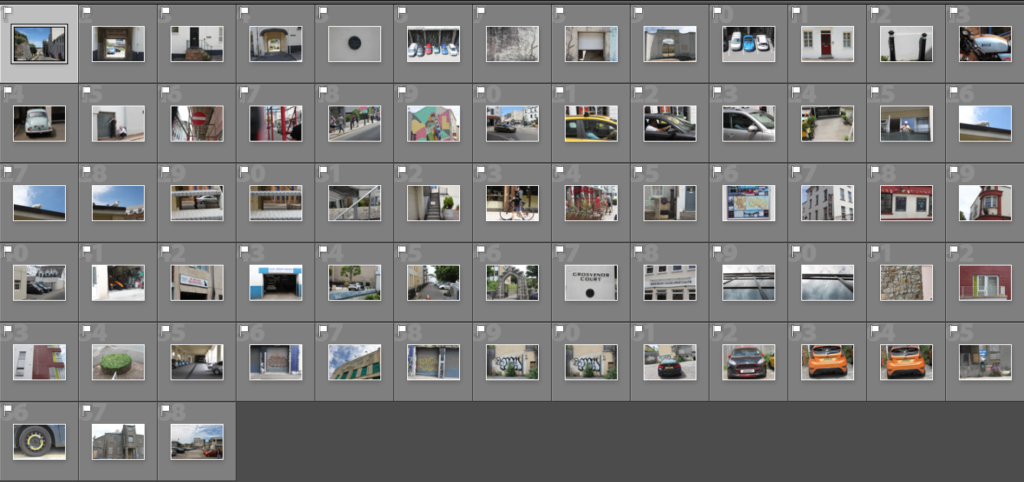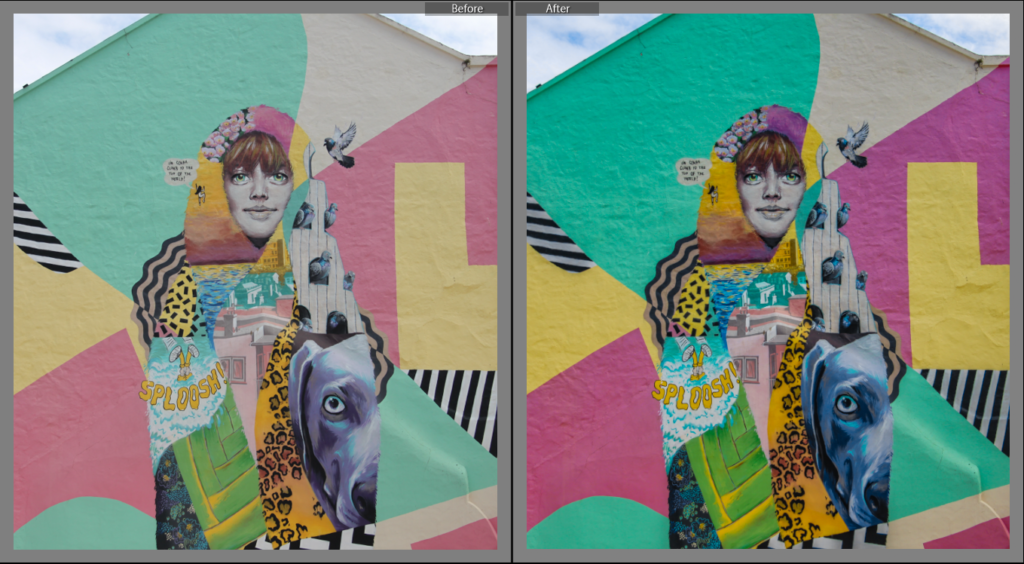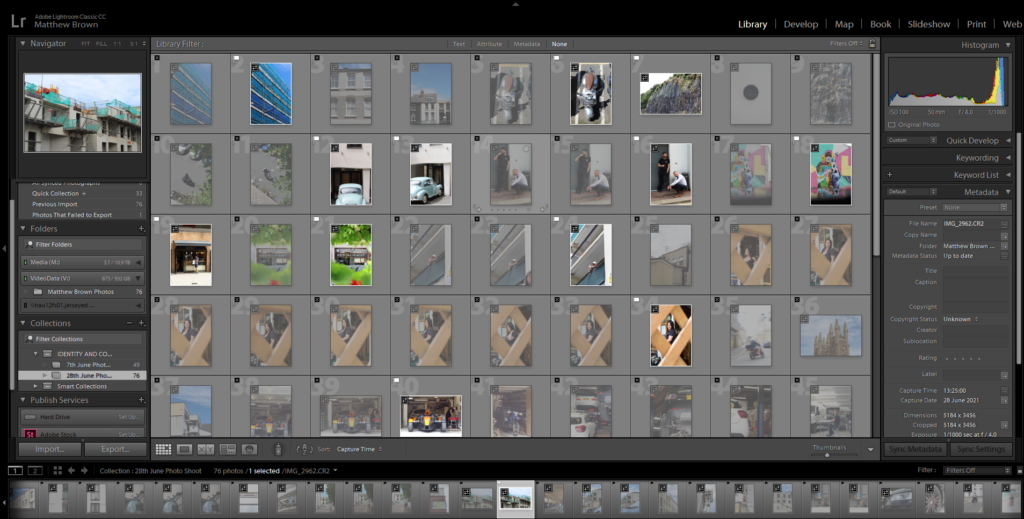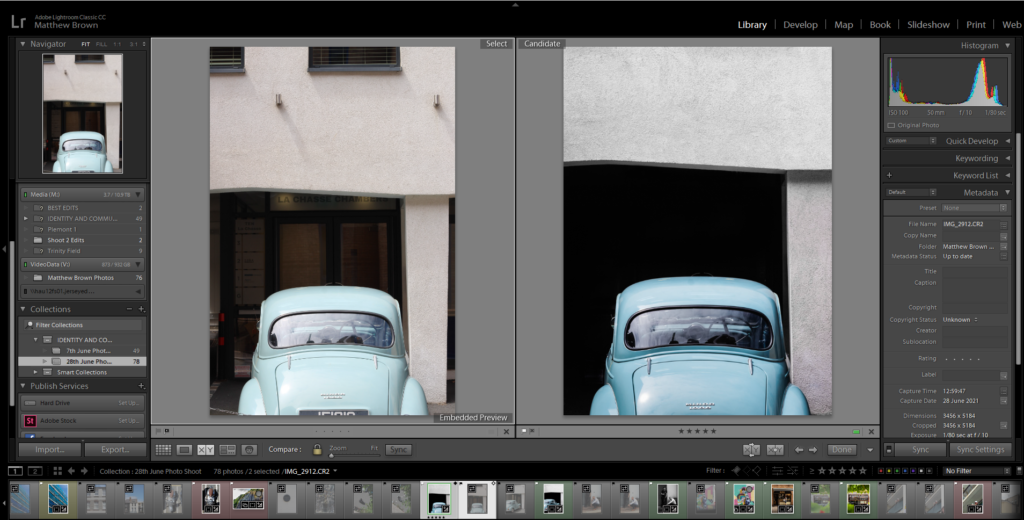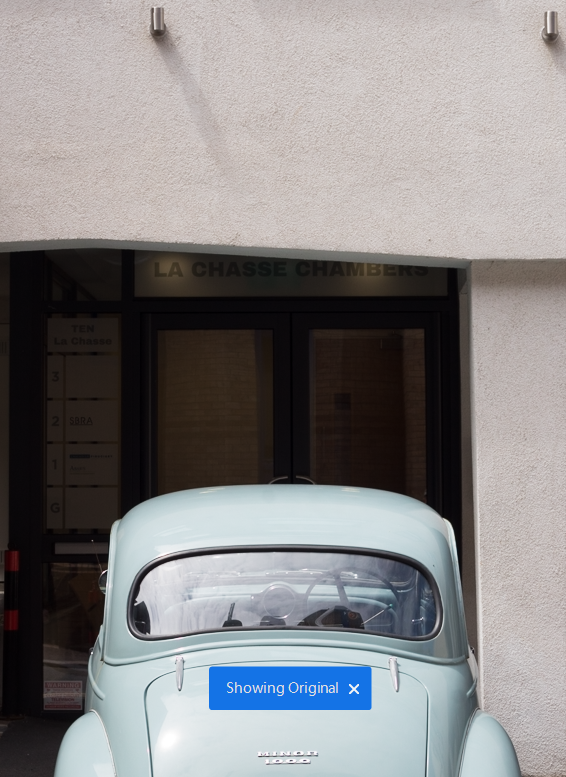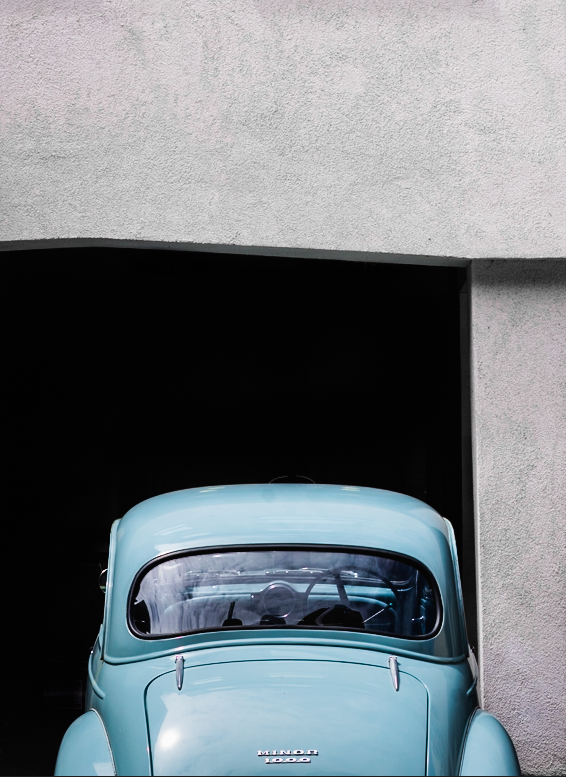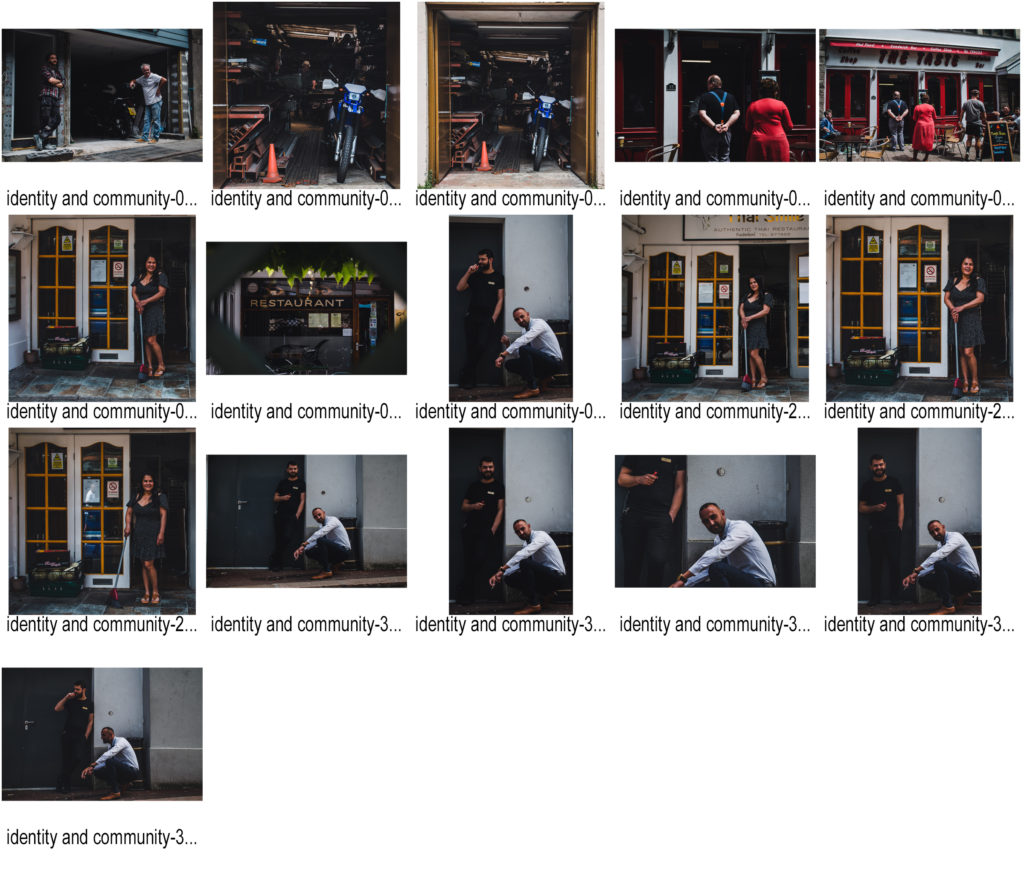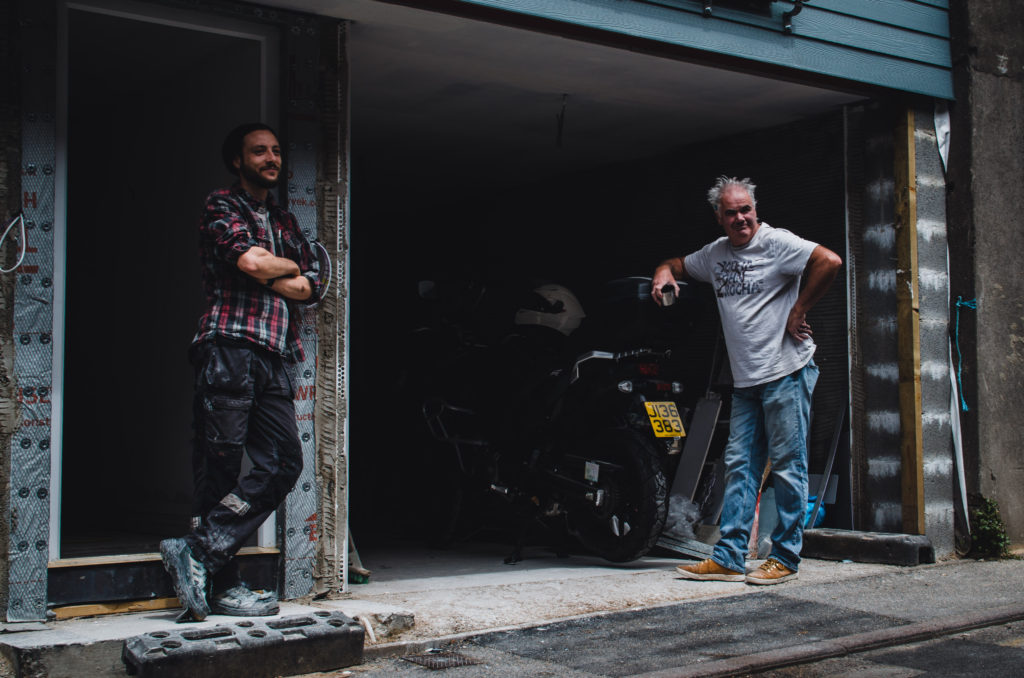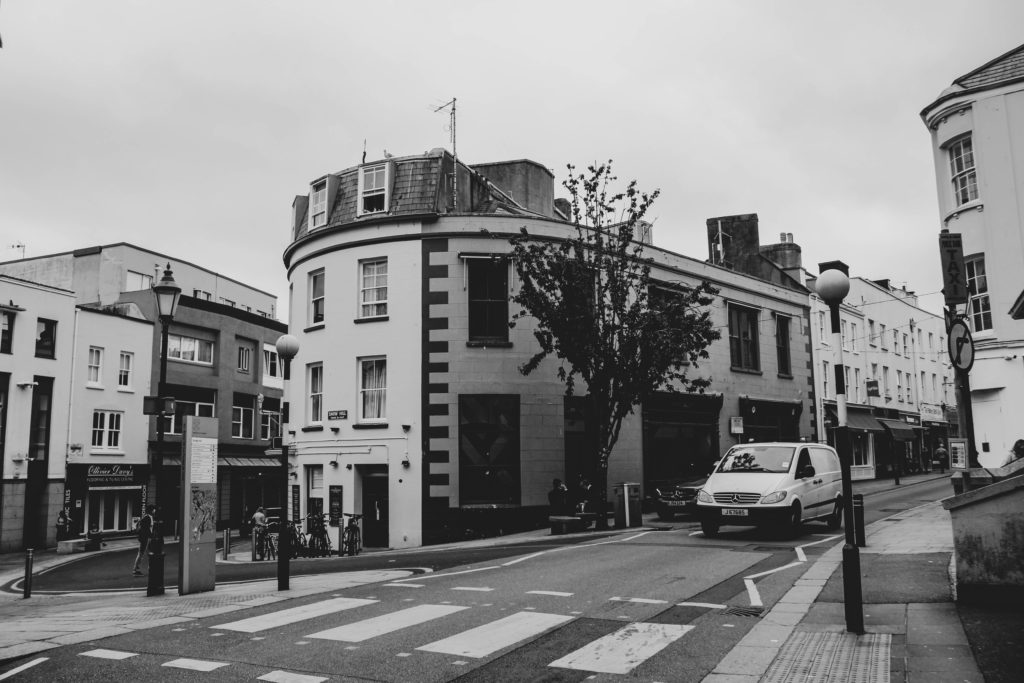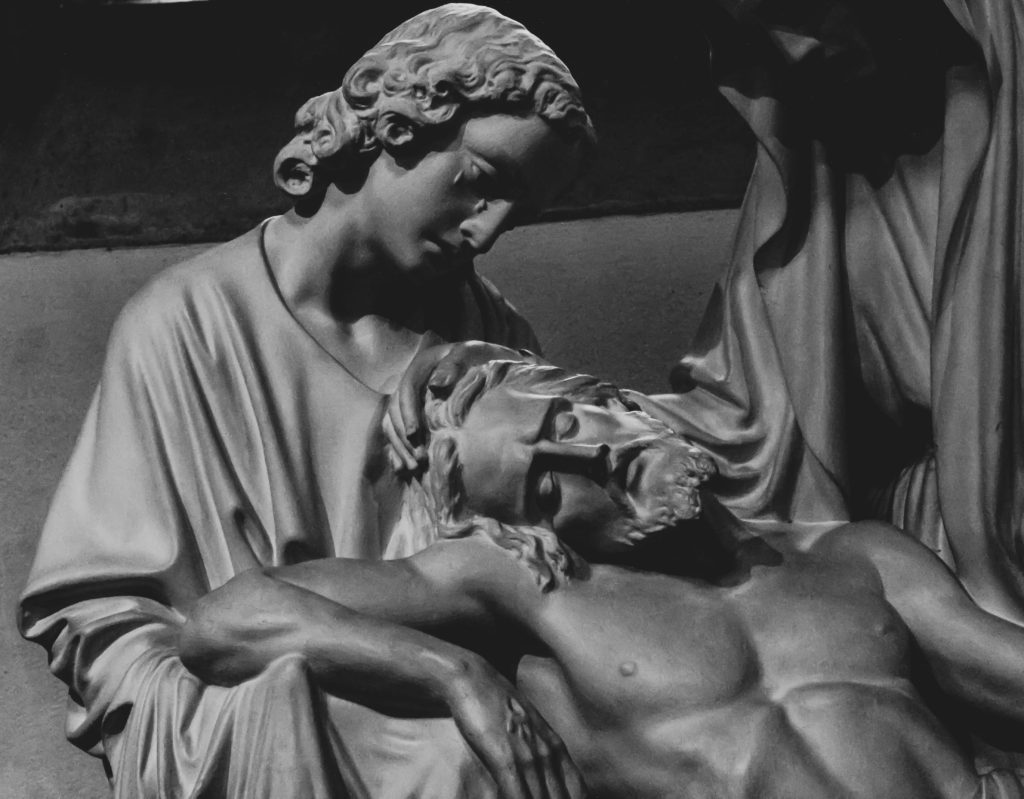
For my first photoshoot I walked the route above (from Royal Sq walk towards St Thomas Church via Broad St, Pitt St, Dumaresq St, Hue St, Le Geyt St, Devonshire Pl, Great Union Road + side streets with character, such as Journeaux St, Aquila Rd, Poonah Rd, Albert St, Columbus St, Dorset St, Clairvale Rd towards Rouge Boullion) and took photographs of anything which caught my eye or sparked my interest. I did my best to ensure that my images were as interesting and as eye catching as possible.
EDITING IN LIGHTROOM

To start with I imported all of my images into Lightroom into a collection called ‘Identity and Community‘ and then into a subfolder entitled ‘Photoshoot 1‘.
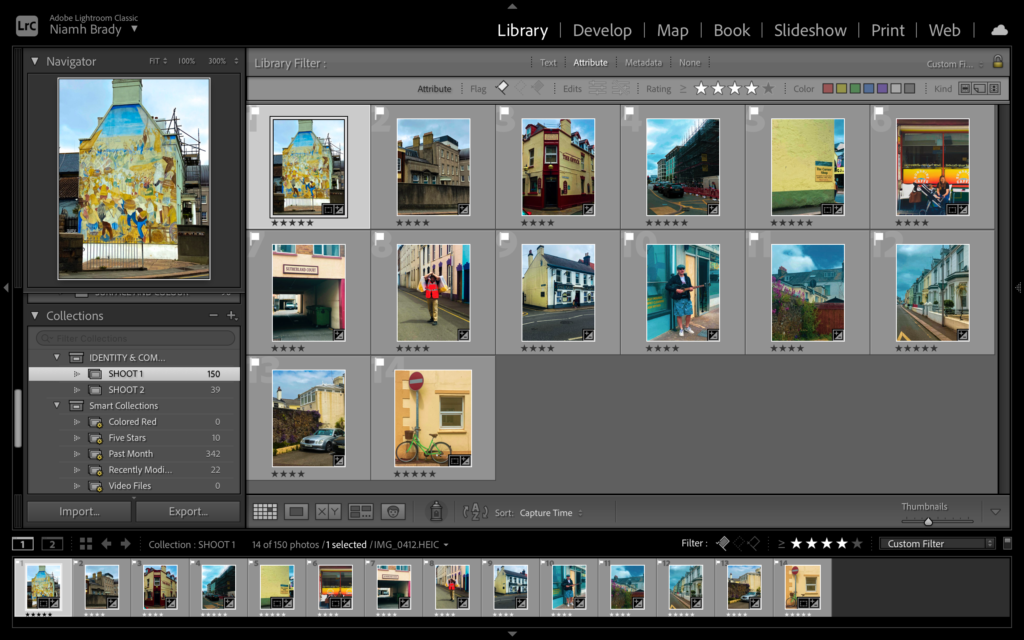
I then went through all of my images with the flag tool, and rejected the ones that I didn’t feel were my best work until I was left with a set I was happy with.

I then decided to give my remaining images a star rating out of 5 until I had my final images from my first photoshoot.
For my second photoshoot, I followed the same route (from Royal Sq walk towards St Thomas Church via Broad St, Pitt St, Dumaresq St, Hue St, Le Geyt St, Devonshire Pl, Great Union Road + side streets with character, such as Journeaux St, Aquila Rd, Poonah Rd, Albert St, Columbus St, Dorset St, Clairvale Rd towards Rouge Boullion). This time, however, I attempted to take photographs of different things that perhaps I hadn’t seen last time, or didn’t think were interesting enough. Again, I tried to keep my images as eye catching as possible. I also used the same methods of editing in Lightroom.


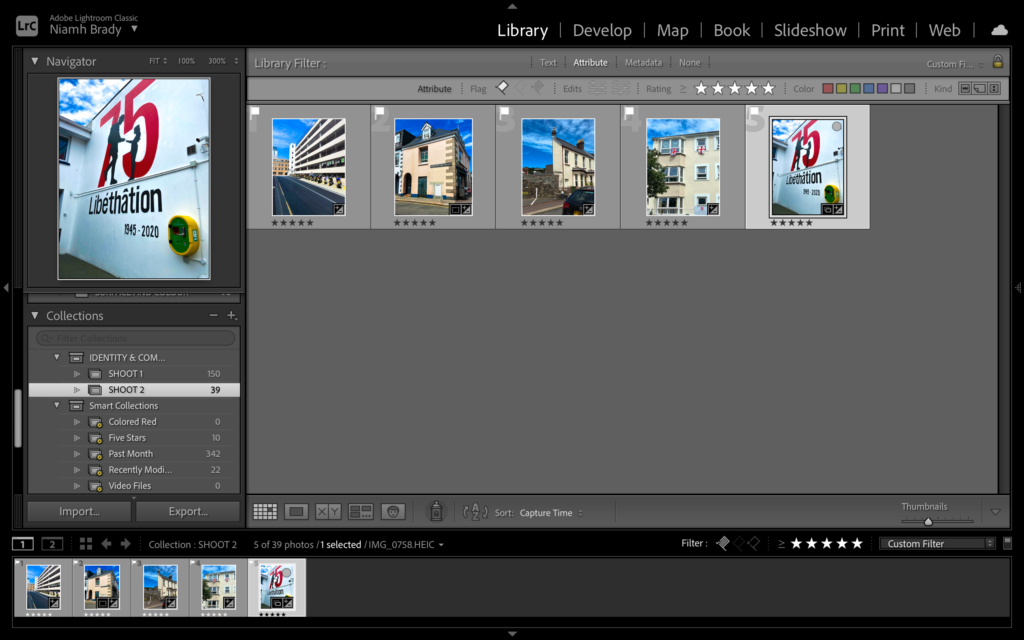
FINAL IMAGES
EVALUATION
Overall, I think that my images from both of my photoshoots around St Helier produced some good quality images. However, one thing which I could improve upon would be the positioning of the camera when I capture the images. This is because I had to reject some good photographs as they were wonky or blurry. For my next photoshoot my aim is to think more carefully about where I am positioning the camera as well as myself in order to produce an abundance of quality work.




